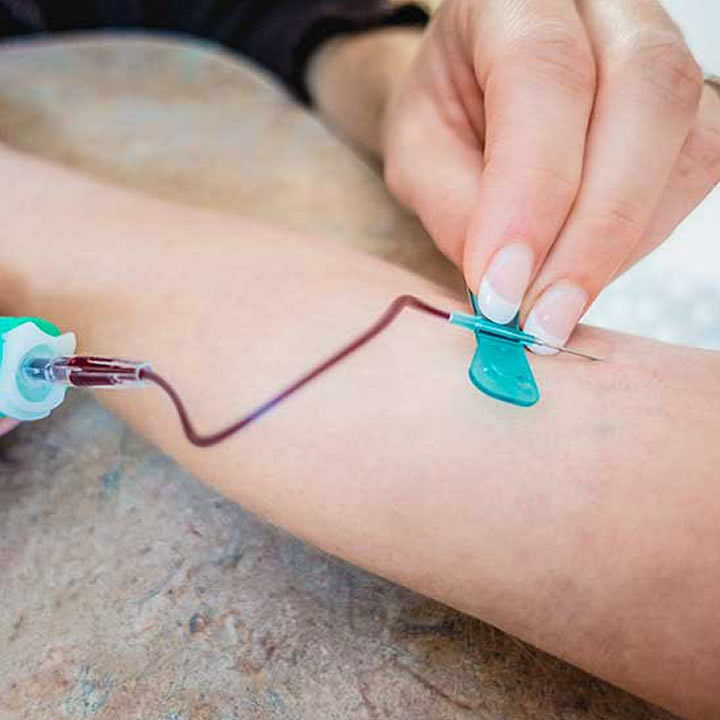A butterfly needle is a tool that accesses veins for giving medications or collecting blood. Medical professionals also refer to it as a scalp vein set or a winged infusion set. The plastic wings on either side of the hollow needle help access the veins; a shorter needle with a thinner gauge and ranges from sizes 18 to27.
Butterfly needles are of two main types: push-button safety devices and standard safety devices; standard safety devices come with 23 needles or 21 gauge and a tube. The phlebotomist retracts the needle by hand for disposal once blood collection is complete. On the other hand, push-button safety devices come in various gauge sizes. Some push-button safety devices contain a Luer lock that helps secure the needle in place.
The Main Uses Of Butterfly Needle
A medical professional uses a butterfly needle to collect your blood or give (IV) intravenous medications by accessing a vein. A needle remains in the vein of a patient who uses a butterfly needle unlike the use of a catheter where a person gets a plastic sheath in the vein. A butterfly needle is effective for drawing blood due to the following reasons:
IV hydration – A nurse or a doctor uses a butterfly needle to access a vein to patients in need of IV fluids. IV hydration is used as a treatment for dehydration, in a person facing surgery or unable to eat or drink due to illness. The butterfly needle is hollow to allow infusion of IV fluids to help rehydrate and restore fluid level.
Medication – Doctors use butterfly needles to give IV medications to patients that are pushed through the syringe. Medications are administered through this needlework quickly and are ideal for people who cannot use their mouth to take medicine.
Venipuncture – It is a term used when a phlebotomist accesses a vein to collect or draw blood. A medical professional who specializes in drawing blood is a phlebotomist. Butterfly needles are used by people with difficulties in applying venipuncture like children, infants, and older adults. It is also effective for placing on small, roll, or fragile veins.
A butterfly needle is ideal for use in a person donating blood such as for a blood bank. A medical professional can easily connect it to another tubing due to its flexible tubing attached to the end in blood collection.
Effectiveness Of Butterfly Needle
Phlebotomists prefer to use a butterfly needle compared to a standard needle because of its proficiency. Its shorter length enables a person to hold it closer to the stem and have more control. Butterfly needle gained popularity due to the following reasons;
Butterfly needles are smaller in size than an intravenous catheter, and their shallow angle design enables them to access superficial veins near the surface of the skin with ease. Its ability to access narrow or small veins makes them less painful; thus, it’s suitable for use in the elderly and infants’
Advanced models of butterfly needles come with a slide and lock sheath that is automated to slide over the needle during its extraction from a vein. The automation property prevents the reuse of a used needle and needle-stick injuries.
People with rolling or small veins are best suited for butterfly needles. Medical professionals insert into the tiny veins of the scalp, heel, or foot.
Butterfly needles are used on hesitant or frightened patients and people with needle-related phobia because they are less threatening.
There are few cases of nerve injury, profuse bleeding, or vein collapse in the use of butterfly needles.

